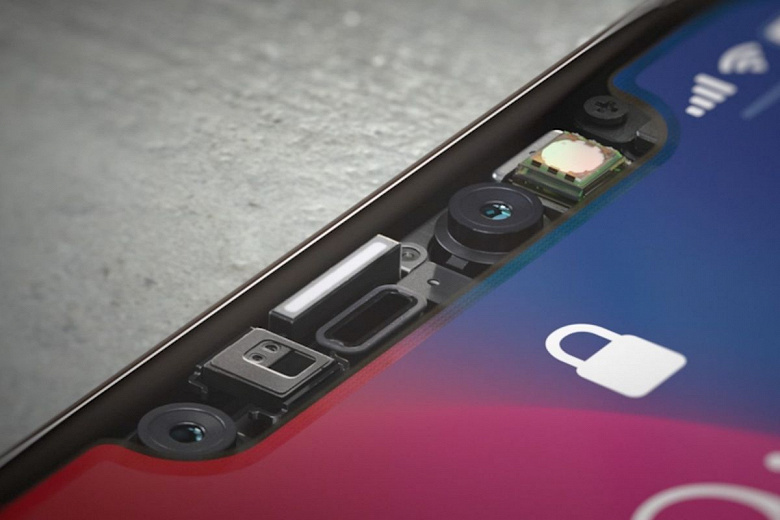A few days ago it became known that replacing the screen on smartphones of the iPhone 13 line in unauthorized service centers will disable the Face ID function, even if the display is original. It turned out that in this situation everything is not so unambiguous and simple, but there is still a method to get around this problem.

Information and thoughts on this matter were shared by the specialists of the iCorrect company, which specializes in the repair and maintenance of various modern equipment.
Do you need to start with how does Face ID actually link to the screen? At first glance, nothing at all, because the TrueDepth module is not connected to the screen, but to the motherboard. The reason for this relationship lies in Apple’s approach to designing its smartphones, and this approach is not new.
So, the screens of Apple smartphones have a special chip through which the device interacts with the display. In particular, it is this chip that acts as an ADC, converting the signals of the sensor layer from the user’s clicks into digital signals transmitted to the smartphone’s processor. Before the iPhone 6s, such a chip was located directly on the motherboard of the smartphone, but in the iPhone 6s it was transferred to the display.
In the iPhone X, the Cupertino giant expanded the capabilities of this chip, which began to act not only as an ADC, but was also responsible for activating the True Tone function. It is for activation, not for its work. As a result, on the iPhone X, unauthorized replacement of the display led to the disabling of the True Tone function. Everything was realized simply. In the same screen chip, which is an integrated circuit, an EEPROM (Electrically Erasable Programmable Read-Only Memory) chip was embedded. As a result, every time the iPhone was launched, it read the True Tone activation code from this microcircuit. And if you replace the screen yourself, even with the original one, the function still did not work.
That is, the problem in such cases is not in the screen itself, but in a special chip that is part of the display module.

But in the case of the iPhone X, Chinese craftsmen quickly got the hang of transferring data from the original chip to the chip on non-original displays, since the microcircuit allowed to read and write data.
With the iPhone 11, Apple has complicated its idea by adding another read-only memory (ROM) chip to the same IC. As a result, it was no longer possible to simply copy its data to another similar chip. As a result, on devices of the iPhone 11 line, with an unauthorized replacement of the screen, not only did the True Tone function disappear, but also a message constantly appeared that the smartphone could not verify the originality of the display. But, as we already understand, not the display itself, but only its chip.
In addition, Apple began to implement the same chips in batteries, and in the iPhone 12 line a similar solution was for some reason implemented for the main camera module, although there are simply no fake camera modules for the iPhone 12 on the market.
And now we come to the iPhone 13 line. In new smartphones, the same chip is now also responsible for activating Face ID. However, the bottom line is that the source believes that this very interaction is a bug in iOS 15, and in fact, Apple did not plan to establish such a relationship in this generation. Most likely, in the next updates, this connection will be broken. The source’s opinion is that this is a groundwork for the future generation, when the Touch ID fingerprint scanner will be integrated into the iPhone screens. And the same chip will be responsible for the operation of this sensor, as is already implemented in some Samsung smartphones.
In addition, the source believes that in fact, in this way, Apple is fighting primarily not with unauthorized service centers, but with Chinese craftsmen who benefit from the ability to easily replace everything in the iPhone, since you can earn a lot from this.
As for the opportunity to bypass the protection at the moment, it is there. Everything is very simple in essence, but difficult to implement, because you need to re-solder the same chip to a new display module when replacing it.
.
Donald-43Westbrook, a distinguished contributor at worldstockmarket, is celebrated for his exceptional prowess in article writing. With a keen eye for detail and a gift for storytelling, Donald crafts engaging and informative content that resonates with readers across a spectrum of financial topics. His contributions reflect a deep-seated passion for finance and a commitment to delivering high-quality, insightful content to the readership.







